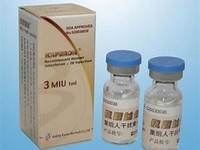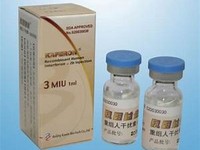Aspirin

Aspirin
CLINICAL USE
NSAID:
Analgesic and antipyretic Prophylaxis of cerebrovascular disease or myocardial infarction DOSE IN NORMAL RENAL FUNCTION
Analgesia: 300 mg – 1 g every 4 hours. Maximum 8 g daily in acute conditionsProphylaxis of cerebrovascular disease or myocardial infarction: 75–300 mg daily PHARMACOKINETICS
Molecular weight :180.2 %Protein binding :80–90 %Excreted unchanged in urine : 2 (acidic urine); 30 (alkaline urine) Volume of distribution (L/kg) :0.1–0.2half-life – normal/ESRD (hrs) :2–3/Unchanged DOSE IN RENAL IMPAIRMENT
GFR (mL/MIN)
20 to 50 : Dose as in normal renal function. See ‘Other Information’ 10 to 20 : Dose as in normal renal function. See ‘Other Information’ <10 : Dose as in normal renal function. See ‘Other Information’ DOSE IN PATIENTS UNDERGOING RENAL REPLACEMENT THERAPIES
CAPD :Dialysed. Dose as in normal renal function HD :Dialysed. Dose as in normal renal functionHDF/high flux :Dialysed. Dose as in normal renal functionCAV/VVHD :Dialysed. Dose as in normal renal function IMPORTANT DRUG INTERACTIONS
Potentially hazardous interactions with other drugsACE inhibitors and angiotensin-II antagonists: antagonism of hypotensive effect, increased risk of nephrotoxicity and hyperkalaemiaAnalgesics: avoid concomitant use of 2 or more NSAIDs, including aspirin – increased side effects; avoid with ketorolac – increased risk of side effects and haemorrhageAntibacterials: possibly increased risk of convulsions with quinolonesAnticoagulants: effects of coumarins enhanced; possibly increased risk of bleeding with heparins and coumarinsAntidepressants: increased risk of bleeding with SSRIs and venlaflaxineAntidiabetic agents: effects of sulphonylureas enhancedAnti-epileptics: possibly increased phenytoin concentrationAntivirals: increased risk of haematological toxicity with zidovudine; concentration possibly increased by ritonavirCiclosporin: may potentiate nephrotoxicity Cytotoxic agents: reduced excretion of methotrexate; increased risk of bleeding with erlotinibDiuretics: increased risk of nephrotoxicity; antagonism of diuretic effect, hyperkalaemia with potassium-sparing diureticsLithium: excretion decreased Pentoxifylline: increased risk of bleeding Tacrolimus: increased risk of nephrotoxicity ADMINISTRATION
Reconstition
– Route
Oral Rate of Administration
–Comments
– OTHER INFORMATION
Aspirin at analgesic/antipyretic dose is best avoided in patients with renal impairment, especially if severeAntiplatelet effect may add to uraemic gastrointestinal and haematologic symptomsDegree of protein binding reduced in ESRD
See how to identify renal failure stages according to GFR calculation
See how to diagnose irreversible renal disease
Home


.JPG)






